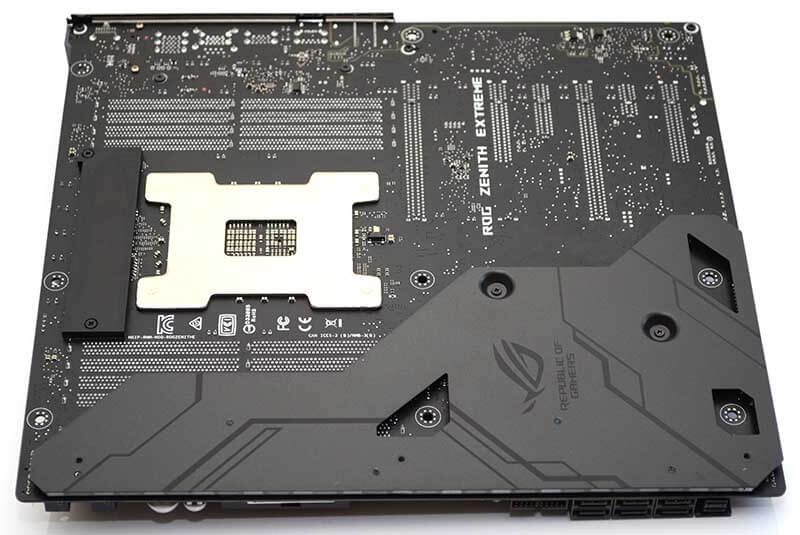ASUS RoG Zenith Extreme X399 Motherboard Review
Peter Donnell / 7 years ago
A Closer Look
First impressions of this motherboard are very reassuring. Not only is it a great looking bit of kit, it also feels like a premium quality product. It’s certainly heavy-duty in design and heavy to hold, which speaks volumes of its build quality. The all black and grey design makes it look nice and neutral too, so it should blend in with almost any colours scheme on your build.
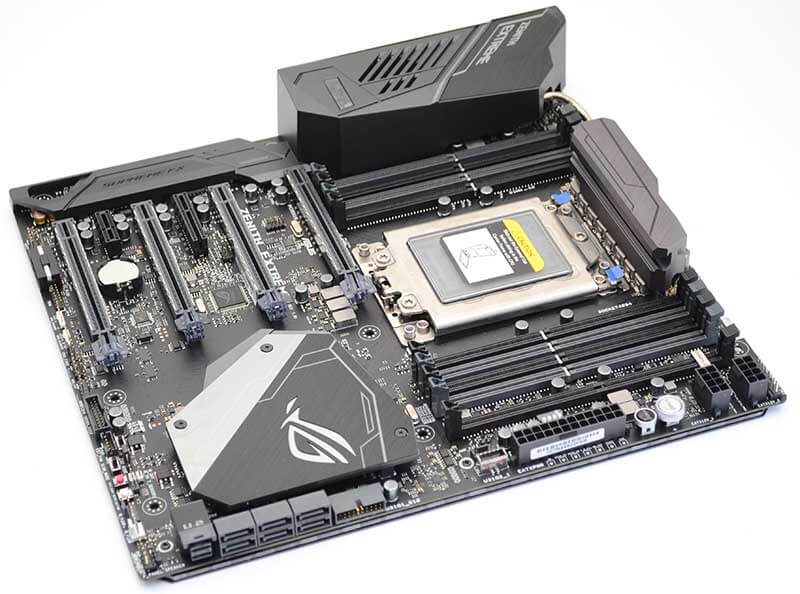
TR4 Socket!
Of course, the main star of the show here is that lovely new socket, called TR4. With support for the new Thread Ripper CPUs, the socket is without a doubt the biggest I’ve ever seen, and it uses the new slide in mounting system that locks down very securely. Surrounding that socket are 8 x DDR4 DIMM slots, for quad-channel memory. Also, there’s a swanky DIMM.2 slot too.
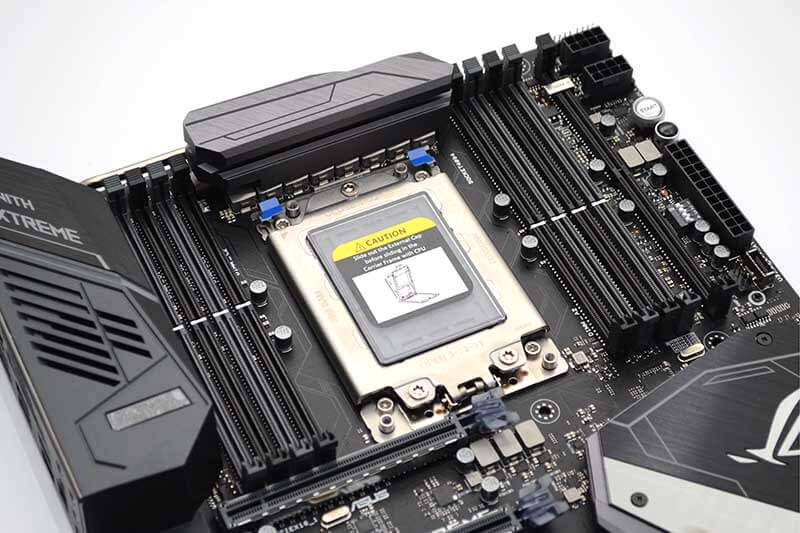
There’s a chunky metal heat sink on the VRM for the CPU, promising big power delivery thanks to not one, but two 8-pin CPU headers. Cooling is boosted by a heat pipe running to another heat sink in the rear I/O cover, which features a small cooling fan to keep the heat in check.
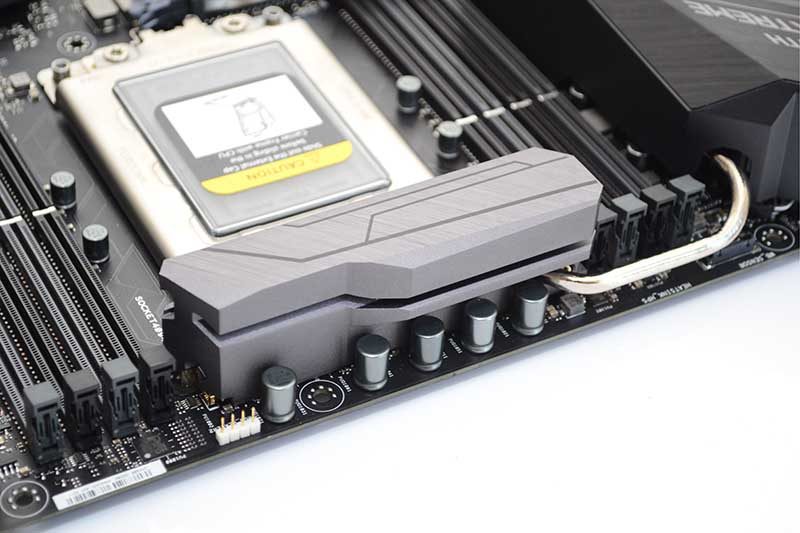
Aside from the 2 x 8-pin CPU headers, there’s also the standard 24-pin header. Having both on the right edge should make cable routing very easy.
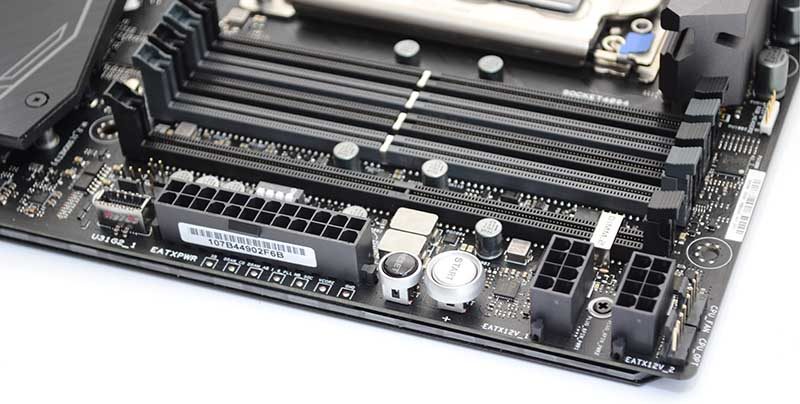
Connectivity is robust, with a USB 3.1 header for the front panel, USB 3.0 (full-size), 6 x SATA 6Gb, and 2 x U.2. Of course, the new CPUs also offer 64 PCIe lanes, meaning those using M.2 storage, and more M.2 storage via PCI can really reap the benefits of modern high-performance storage devices.
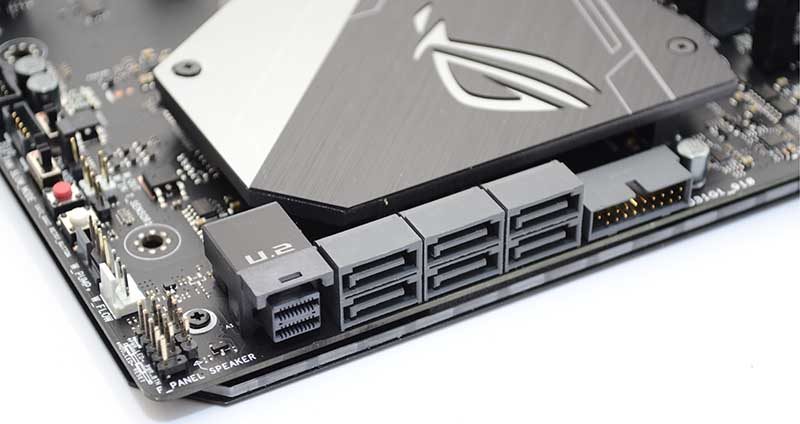
The main chipset comes housed under a massive heat sink of its own. This big chunk of metal takes up a lot of space, but it still has plenty of breathing room to keep cool.

Comprehensive Connectivity
Every edge of this board is crammed with connections. There’s another USB 3.0 header, multiple fan connections everywhere, water flow headers, voltages, a Molex to drive more power to PCIe lanes, the list goes on. They’re small, but the board also has on-board power controls, which is always helpful for test-bench installations.
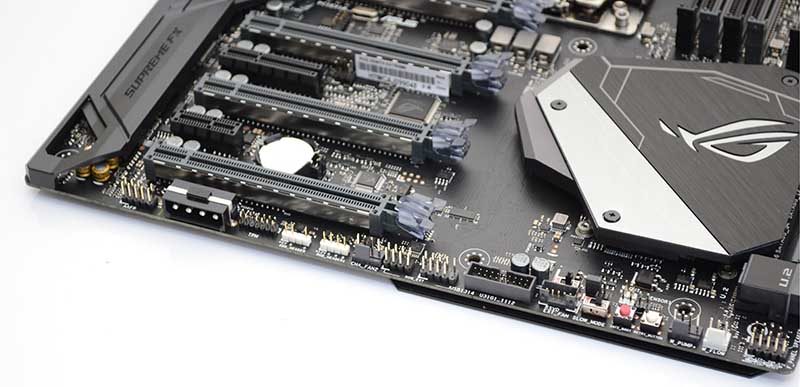
The four full-size PCIe lanes come with metal reinforcement, and there is also a 1/3 and 1/4 lane in there too. Tucked under a nice shroud are the audio chipsets, promising premium high-def audio via Supreme-FX; although what boards don’t these days!
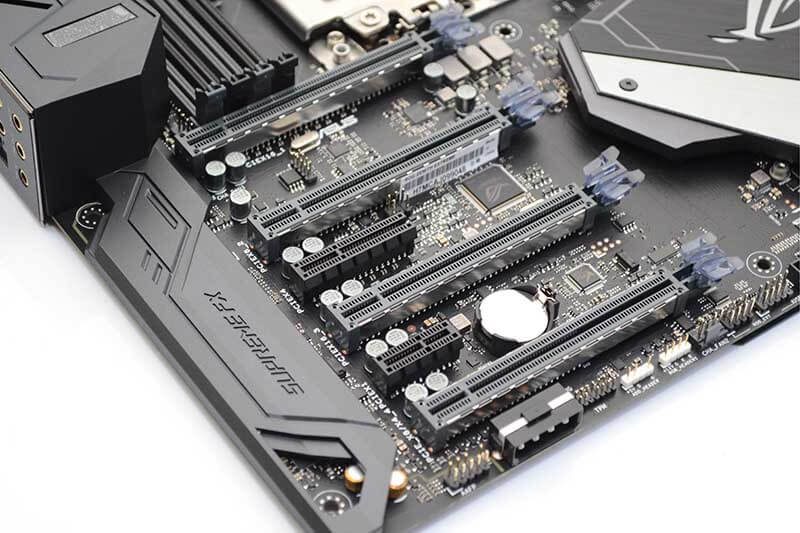
The rear I/O is pre-installed, keeping the installation nice and easy and looking much cleaner than a clip-on cover. There’s a boat load of features here too. From left to right, there’s BIOs and CMOS controls, Wi-Fi, loads of USBs in all shapes and sizes, RJ45, Optical and audio jacks. There’s also a bit of ventilation here for that built-in cooling fan.
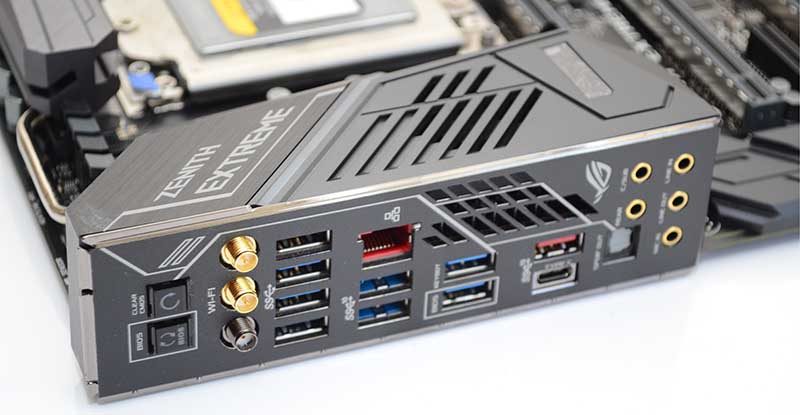
Last, and by no means least, we have two full metal backplates. These plates provide added strength to the board, and also help keep the VRM mounts locked firmly in place. They look pretty slick too, but added strength and cooling capabilities are easily the best aspects here.
